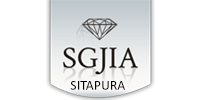03 September, 2025
Turquoise, a gemstone rich in centuries of history and cultural significance. For retailers and wholesalers, turquoise stones are respected for their stunning blue and green hues. But its increasing popularity and demand have led to a market saturated with convincing imitations.
Knowing how to identify the difference between fake turquoise vs real turquoise is no longer just a skill; it becomes essential to safeguard your investment and business reputation. This guide will walk you through the knowledge you need to spot the difference between real and fake turquoise.
It is vital for you to know that not all turquoise is the same or real. The stone’s quality and value exist on a spectrum, which is the key to understanding what you are purchasing (a real vs a fake).
This is the highest quality form of turquoise. It is rare; you can sense this as the hard mineral pulled from the earth. It is tough enough to cut and polish without any help (meaning it does not require any polishing, as it has natural colors).
Stabilized turquoise has the largest market share in the US, with estimates ranging from 85-90%. This form comes from a long process that starts from finding lower-grade turquoise that is soft or porous for jewelry making.
Then it is treated with a clear epoxy resin under extreme pressure. This process provides the stone its strength, prevents its color from changing over time, making it durable for daily wear. The stone is still considered real turquoise, just for practical use.
This is a real turquoise stone, but its natural color has been replaced to enhance or change the color. While it is not a fake turquoise, this kind of treatment does impact its value.
As an experienced and reputable turquoise jewelry manufacturers like JewelPin always disclose disclose if the stone has been color-treated as the transparency is key:
Fake turquoises are manufactured intentionally to trick customers. Understanding their key characteristics is the best defense you can have. Here are the most common turquoise imitations:
This is the most widespread imitation. Howlite is a naturally white stone with a delicate gray or black webbing. They often dyed to mimic the appearance of turquoise.
These turquoise often look bright and too uniform, without the subtle color shifts you can see in the natural/real turquoise. The black "matrix" can appear too perfect or almost like a drawing.
Howlite is softer than real turquoise (often 3.5 on the Mohs scale vs. 5-6). For expert-like inspection, you can do a gentle scratch with a pin or knife in an inconspicuous area to reveal the underlying white stone.
Since it is not the real turquoise and its color is not natural, it is a surface dye. You can rub a cotton swab soaked in acetone (e.g., nail polish remover) on the stone. If the color comes off or is removed onto the swab, it is a fake turquoise.
This type of fake turquoise is made from low-grade turquoise powder that is mixed with a binding agent like resin and then compressed into blocks. However, this is crafted from real turquoise, but wait, it is not a real/solid stone.
The material of such fake turquoise feels very smooth, with a plastic-like texture and a uniform, manufactured look. You can find the matrix that looks like a fine, evenly distributed speckle rather than natural veins.
Reconstituted (Chalk) turquoise will feel lighter than a solid piece of natural stone of the same size. You can easily get the difference when you take both in distinct hands.
This is a destructive test; we may only advise you to do it on an inconspicuous spot. In this, a hot pin pressed against a hidden spot on the stone will melt the resin, and you will get the smell of burnt plastic. Always remember, real turquoise won't melt.
These are the most basic, cheapest, and easiest fakes/imitations of turquoise. They contain no actual turquoise and are often available at the cheapest rates in the market.
This turquoise contains completely uniform color and often has an unnatural, high-gloss finish that you may find unnatural. They tend to be lightweight in your hand.
When you touch genuine turquoise, it feels cool because it is a mineral. Finding the fake one is easier for you, as plastic or glass-made turquoise will warm up quickly in your hand.
You can also do the scratch and hot pin tests, which will immediately help you distinguish between real turquoise vs fake turquoise.
In the jewelry business, success also depends on quality and reliable product selling. When you can confidently assure your customers they are buying authentic turquoise, you build trust and gain a key competitive advantage in this market.
At JewelPin, we understand the importance of trust and honesty. As an RJC Certified jewelry manufacturer in the USA, we promise transparent pricing and full disclosure on any gemstone treatments. It ensures retailers like you always know exactly what you’re buying and allows you to source with confidence. Sourcing from a reputable partner like us is the simplest way to avoid the risks of the fake turquoise market and build lasting trust with your customers, along with your brand reputation.
Now that you know how to distinguish between real turquoise and fake turquoise. But making smart decisions when sourcing turquoise jewelry suppliers/manufacturers is the best way to protect your business identity and reputation.
When you consider a new turquoise jewelry supplier, here are the questions you should ask without hesitation. Their transparency will tell you about their commitment to quality.
A reliable manufacturer will always know where the turquoise stone has come from.
The best turquoise stone provider in the USA will provide you with clear, honest answers about the condition of the stones.
You can ask or check on your own on the turquoise jewelry supplier's website about the certification they hold, like RJC and GIA (Gemological Institute of America). This adds an extra layer of confidence when they manufacture certification from the lab.
You can ask this when choosing the turquoise jewelry supplier who is part of any certified body, like the RJC, which will ensure that their material sources are ethical and responsible. By asking these questions, you can easily choose a trusted and top turquoise stone provider in the USA.





